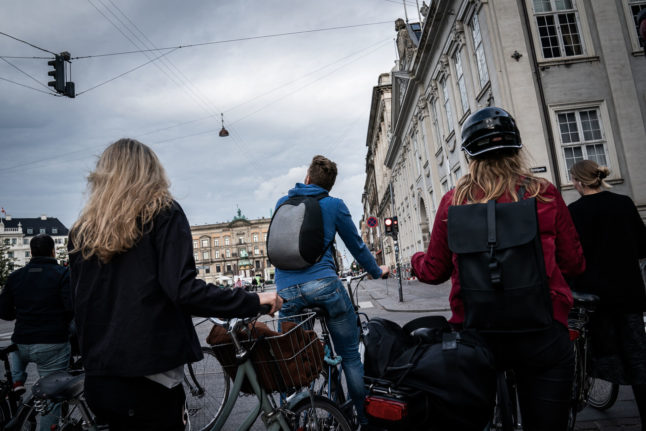I’m off on summer holiday. I’ll be back in a month (Jeg skal på sommerferie. Jeg kommer tilbage om en måned)
Danish employment law ensures some of the most generous annual leave in the world, with five standard weeks or 25 days normally available to most employed people.
There is a “main holiday period” which starts on May 1st and ends on September 30th, during which three weeks’ consecutive vacation can be taken out of the five weeks.
Danes are often creatures of habit and tend to take their three weeks off in a row in July, when the schools are also on holiday. So don’t be surprised if you receive out-of-office replies asking you to try again in a month.
READ ALSO: What you need to know about vacation in Denmark
Where’s your summer house? (Hvor har du sommerhus?)
While in many countries second homes are reserved for the rich, properties in the Danish countryside are relatively cheap and certainly much more affordable than homes in the major cities.
The country has around 220,000 summer houses for its almost six million inhabitants, so you might be able to find a friend to put you up for the weekend.
If this isn’t the case, you could try renting a summer house – around a fifth of all the summer houses in the country are rented out by their owners.
Summer houses differ from regular homes in that residence is not usually permitted year-round. Rules preventing permanent use are in place to ensure summer house areas remain recreational in nature; to limit new construction in valuable and uninhabited coastal areas; and to protect natural landscapes from wear and tear.
READ ALSO: Summer houses in Denmark: What are the rules and when can you live in them?

It’s too hot (Det er for varmt)
The Danish winter is long, the shoulder seasons brief and the summer can be intermittent (apart from in years like 2018, when the hot weather was unbroken for weeks).
With this in mind, you’d think that temperatures reaching into the mid-twenties in Celsius would be welcomed.
This is far from the case, though. I’ve often been surprised at how little it takes for Danes to begin longing for cooler temperatures. Anything over around 24-25 degrees Celsius is likely to be considered for meget (“too much”) and I’ve seen what I would consider a regulation summer temperature of 26 degrees described as denne forfærdelige varme (“this dreadful heat”).
I get the sense that this is partly due to the fact that many homes are designed for the cold winter climate, are well insulated and can therefore feel too hot even when the temperature outside is still pleasant.
On the flip side, it’s also common to hear the opposite weather complaint det er for koldt (“it’s too cold”) in summer, for example during a rainy Roskilde Festival or on a grey August day. This phrase can be heard year-round, though, and does not belong exclusively to summer.
Shall we eat koldskål (skal vi spise koldskål?)
Koldskål (literally “cold bowl”) is a buttermilk dairy product somewhere between milk and yoghurt in consistency. It usually has a lemon flavouring and is served chilled in a bowl. It is eaten by mixing it with dry biscuits called kammerjuncker.
There’s a certain amount of disagreement among Danes as to whether the biscuits, which are about 3cm in diameter, should be dropped into the koldskål whole or crumbled first. Similarly, there are various preferences as to how soggy they should be allowed to get.
One thing is definitely agreed on though, and that is that koldskål should only be consumed during the summer.
Unlike some other Danish food staples – I’m looking at you, rye bread – a refreshing bowl of koldskål is not an acquired taste, even if it sounds weird. It makes a great dessert or summer refreshment.
I miss lighting candles (Jeg savner at tænde lys)
The old cliche of candles and blankets as a cornerstone of Denmark’s “hygge” culture has an element of truth in it, because it’s rare to see a living room without candles during the long winters.
The sun sets late in summer, and the candles generate heat, so they are not used as frequently in the warmer months. This can elicit feelings of nostalgia for getting wrapped up in front of the flames, insulated from the cold and dark within the confines of your home.
It’s therefore not unheard of to hear Danes bemoan the fact that their living rooms feel less homely without the soft light of flickering candles during the summer.



 Please whitelist us to continue reading.
Please whitelist us to continue reading.
Member comments